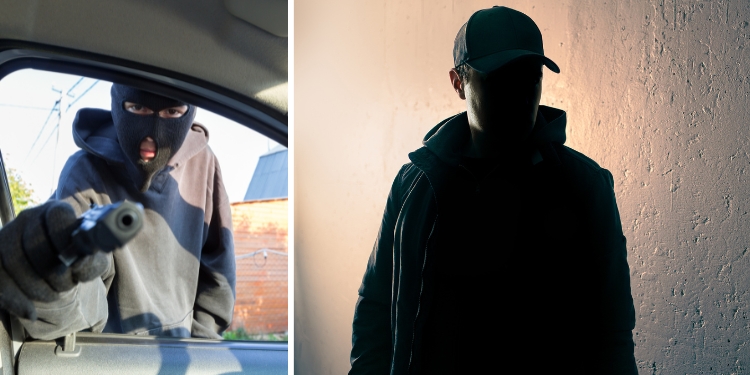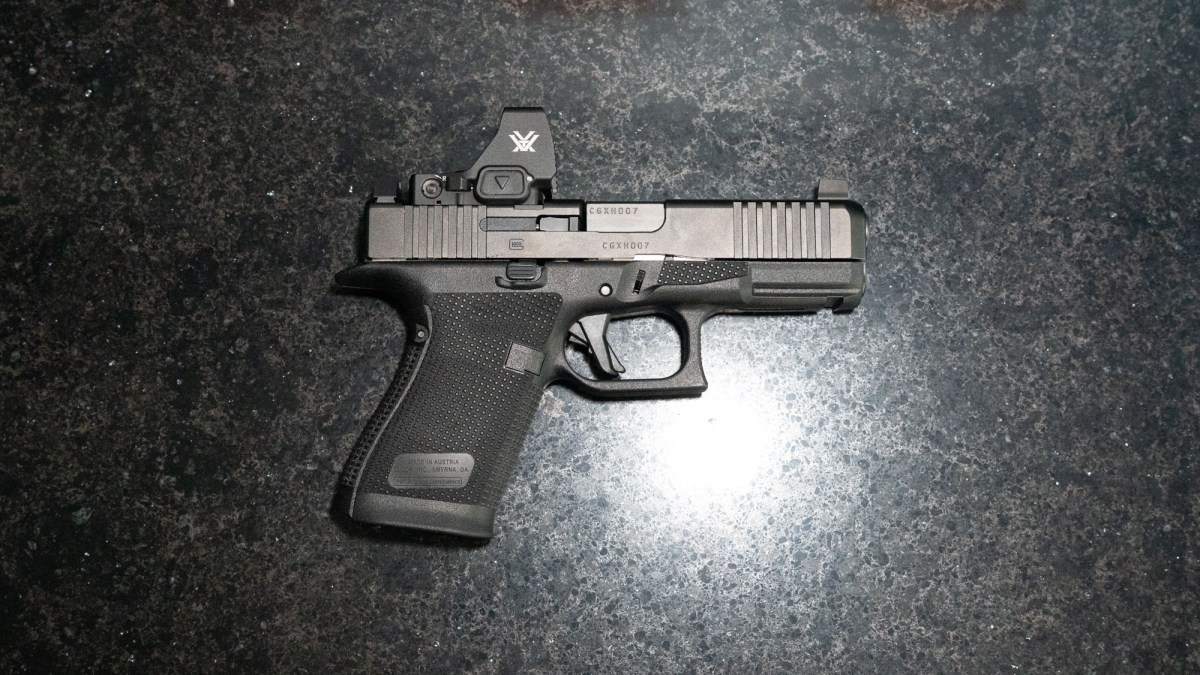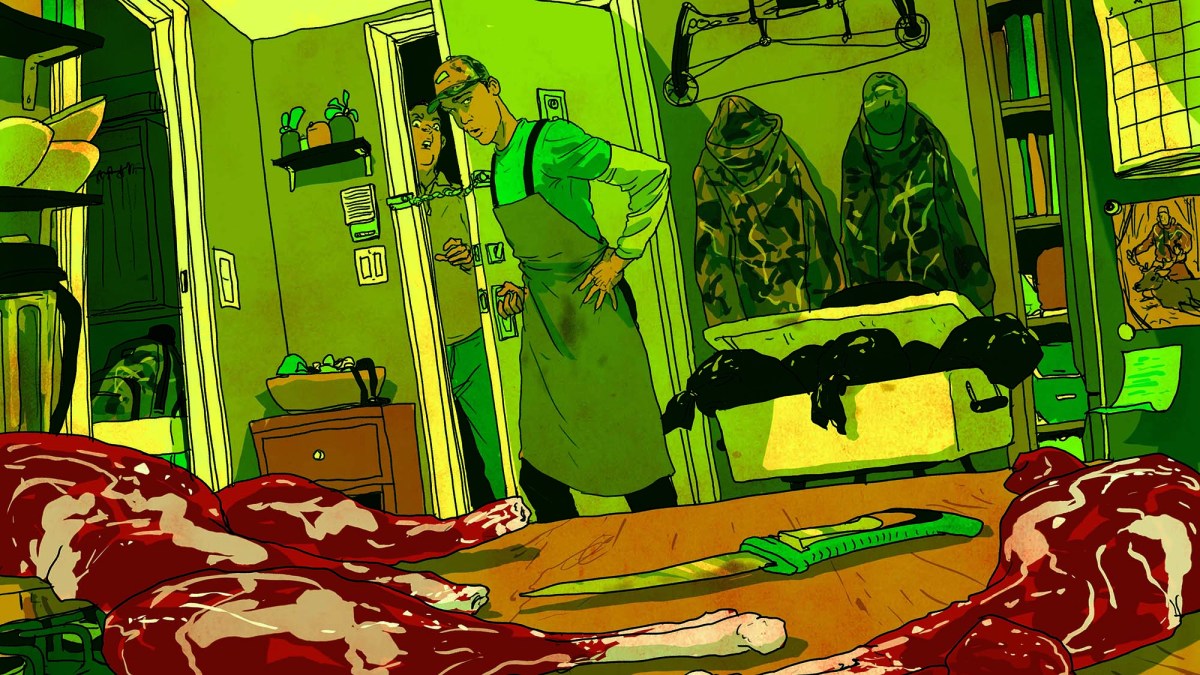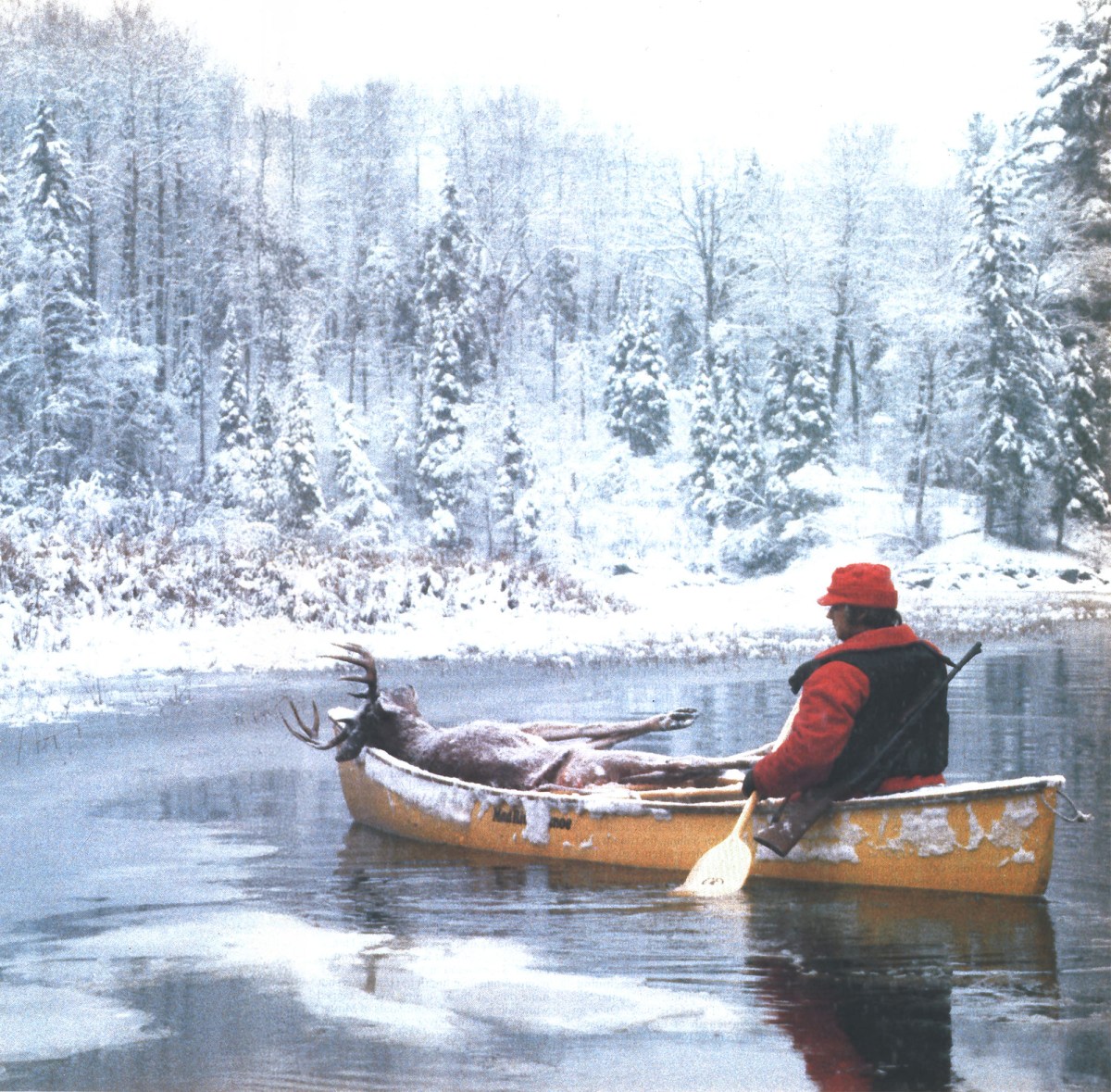Don’t Toss Out Your Deer Hides. Here’s What to Do With Them Instead
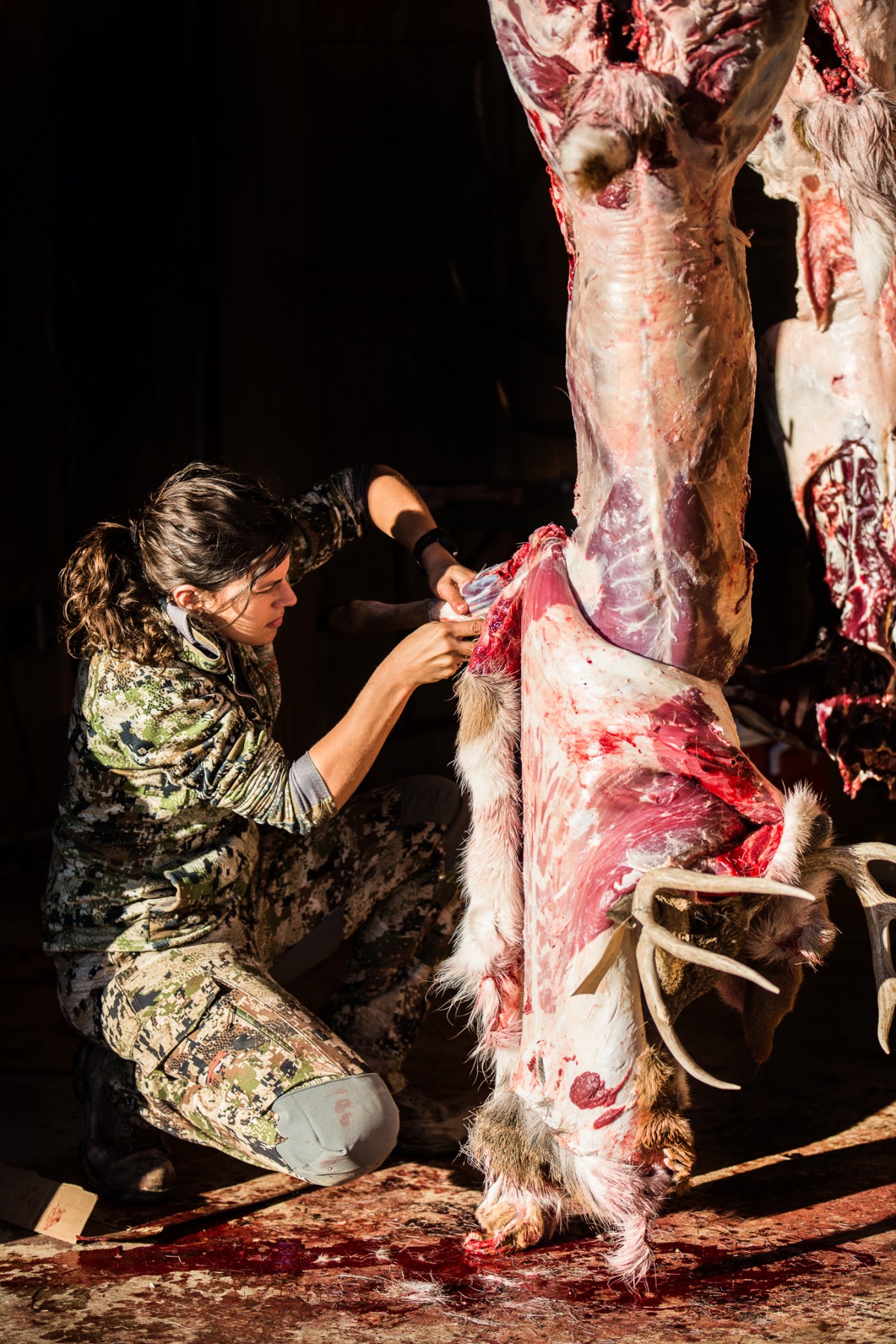
This article originally ran in the September 1981 issue of Outdoor Life.
One of the most valuable parts of a deer is its hide. Unfortunately, thousands of skins are discarded every year because many hunters don’t know what to do with them. Lyn Schuette, president of W. B. Place Tannery in Hartford, Wisconsin, says of the more than 130,000 deer hides legally taken last year in Wisconsin, about half were commercially tanned, as many as 25 percent were home-tanned, and 25 percent were thrown away.
If you’ve been tossing out your deer hides, consider this: They can be made into leather garments and other goods, they can be tanned with the hair on and used as wall rugs, they can be sold to fur buyers and taxidermists, or they can be donated to veterans hospitals or centers for the handicapped.
To make use of your deer hide, the first consideration is caring for it as soon as the animal is down. Don’t stick the deer’s throat-a common but unnecessary procedure. Because an animal’s heart stops when it dies, cutting a dead deer’s throat cannot drain the body of blood.
If you intend to have the deer head mounted by a taxidermist, you must remove the cape (head and shoulder skin) correctly and protect it. That means you should keep it free of cuts and holes. Don’t drag the carcass or the brittle hair will fall off.
Jack Atcheson, a taxidermist in Butte, Montana, said he pays $15 or more for a good, clean cape from a mature buck mule deer. Jim Mackrell, a Concordville, Pennsylvania, taxidermist, pays about the same for a large whitetail buck’s cape.
“Many taxidermists are in the market for good capes,” Mackrell said. “When a hunter brings in a shot-up or spoiled cape, the taxidermist must use another one. Many hunters don’t care for capes properly-they skin them incorrectly or they cut them off too short. When that happens, we must find replacement capes.”
You can sell the hide to a taxidermist, fur dealer, or a tannery. Prices depend on current market value. Mackrell says the value of deer hides goes up if cowhide prices rise. If cowhide prices fall, so do deer-hide prices.
Even when market prices are high, fur buyers could cheat you. Shop around if you want to sell several hides. Game wardens are good sources of information about fur buyers.
Several years ago, while working as forester and game manager for the U.S. Military Academy at West Point, New York, I kept busy after work by skinning deer that were killed by Army officers and cadets, and I kept the hides as payment for the job. When I accumulated 40 or 50 hides, I sold them to Russ Carpenter, a well-known gun writer who owned Carpenter’s Gun Shop. Russ paid top prices for the hides. My small profit kept me in shotgun shells and hunting gear for the year. You could do almost the same thing. Many hunters would welcome someone to skin their deer and use hides that otherwise would be thrown away.
You should skin a deer as soon as possible after it has been killed. Place the hide in a cool place because high temperatures hasten decay. Salt the hide immediately, but if you don’t have salt, wrap the hide in burlap or cheesecloth to protect it from flies or it will soon be ridden with maggots. Never put a hide in a plastic bag. It will quickly overheat and spoil.
To salt a hide, stretch it tautly hair side down on a flat surf ace and remove all fat and flesh. Take care not to puncture the skin. Pour five to seven pounds of salt uniformly on the hide, rubbing it into the edges and pockets where the fur curls over.
Then roll up the hide and place it in a cool place. Because the salt will draw moisture, fluid· might run from the skin. To prevent the skin from sitting in a pool of its own liquid, put a couple of small boards or bricks in a tub and put the hide on this pallet.
The next day, unroll the hide and examine it to be sure every square inch has been salted. You can usually see an area that was missed because it will be a different color than the well-salted parts. Salting every spot is essential because the hair will fall out from unsalted parts.
After the hide has drained well, resalt it, roll it up, and take it or ship it to a taxidermist or tannery. If necessary, you can freeze the hide without damaging it. Wellsalted skins can be kept for weeks or months if stored in a cool, well-ventilated area.
Though most hunters have their deer hides tanned commercially, it’s possible to tan them at home. The process is simple but requires much effort and time.
Here are the steps as suggested in the 135-page book Tan Your Hide, by Phyllis Hobson. (The book, an excellent source of tanning information, also has patterns for garments and accessories.
Soak the hide overnight in a solution of one-quarter cup of lye dissolved in 10 gallons of cold water. If the hair doesn’t slip off easily, keep the hide in the solution until it does.
Drape the hide over a fleshing beam or round log (preferably smooth-barked or peeled), and scrape the hair off with a fleshing tool or butcher knife. (A fleshing tool can be bought from taxidermy supply houses. Check with a taxidermist for information.) Then tum the skin over and use the fleshing tool to remove fat and flesh.
Next soak the hide in a bath of enough diluted vinegar to cover it. Use two cups of vinegar to every 10 gallons of water. After the hide has soaked overnight, rinse it thoroughly in water and immerse it in the following solution: Dissolve two bars of naptha soap in one cup of hot water, then add this mixture to three gallons of hot water.
Allow the solution to cool, and soak the hide in it for four or five days. Stir the skin around several times daily, taking care that it remains completely submerged.
Remove the hide, rinse it in clean water, and pull and stretch it until it’s partly dry. Smear a generous coat of lard, bacon grease, or neat’s-foot oil on the hide and once again soak it in a new solution of naptha soap. Allow it to soak for three more days, stirring it several times daily. Rinse the skin in clean water, and pull and stretch it vigorously over a stake. (You can make a stake by jamming a broken oar or paddle deeply into the ground so it’s stable. Work the hide across the rounded oar until the skin is pliable.) When the skin is well worked and partly dry, stretch it taut and tack it to a frame. Let it dry in a cool, shaded, well-ventilated place. Before the hide dries completely, once again work it over the stake until it is soft.
Smoke the hide by draping it over a framework of poles erected over a small smoky fire. Smoke until the skin turns a golden tan.
Remember that it takes a lot of work to make the buckskin supple. If it starts to stiffen, moisten it with water and give it another going-over on the stake.
If this procedure seems tedious, consider the way Native Americans tanned skins. They threw wood ashes into a quantity of water to make a lye solution, then soaked the hide until the hair slipped. After the skin was fleshed across a peeled log with the thigh bone of an animal, it was smeared with a mixture of the animal’s brains and tallow, and cooked over an open fire. After being allowed to dry somewhat, the skin was worked over a sharpened stump and scraped with stones and shells until it was soft. Smoking completed the process.
If you decide to have your deer hides tanned commercially, you can have them returned to you until you have enough for a garment, or you can have the hides tanned and made into the garments or accessories of your choice.
Beware of outfits that offer to accept your untanned hides as part payment for garments. The difference between the value of your hides and the cost of the clothing could be outrageously high. For example, you might send five hides to a company, which would then charge you an exorbitant rate for tanning. That rate might be so high that the garment would cost more than a similar one at a retail store, and you could keep your hides.
Lyn Schuette says many hunters send or take their hides in every fall and accumulate the buckskins until they have enough for the garments they want. When a hunter turns in his collection of deerskins, all are dyed in the same vat so that they are uniformly colored.
A clothing maker needs five to seven hides to make a jacket, seven to eight hides for a coat, one-and-a-half for a gun case. One average-size hide can yield as many as three pairs of moccasins or gloves. A purse takes one skin, and a small purse or wallet could be made from the trimmings.
W. B . Place sets two prices for each leather item — a “making price” and a “retail price.” The making price is the one you pay if you provide the tanned hides; the retail price is what you pay if you don’t supply hides.
Other companies around the country provide similar services, but most work only with fur dealers and taxidermists who ship hides in large volumes. Most hunters take their hides to a taxidermist, who then sends the skins in bulk quantities.
Before shipping your hides, mark them with a leather punch to identify them as yours, or tag them securely. (You can borrow a leather punch from a high-school crafts class or shoe repairman.) To ship the hides, drain them well (be sure they’ve been well salted), and dry them lightly with a paper towel. Roll them flesh side in, place each hide in a large grocery bag, wrap the package in newspapers, put it in a cardboard box, and seal it tightly. Include a list of instructions, and be sure to indicate if you want the hide tanned into buckskin or with the hair left on. Then send them through the U.S. mail or a commercial parcel-delivery service.
Because hide thickness varies a great deal, manufacturers often pass deerskins through a splitting machine, which slices them to thicknesses having tolerances of 1/100 of an inch. The outer side (the side that formerly held the fur) has grain and is used in clothing. The underside is used in other processes, such as suedes and other types of leathers. You will receive the uniform, grainy “split,” which will be thinner than your original deerskin. A split, being thinner, is not as durable as an unsplit hide. But a split can be sewn on a regular sewing machine while heavy-duty factory machines are needed to sew a full-thickness hide. Find out your tannery’s policy on splitting deerskin. Many leather-clothing makers use only splits.
Many people make their own leather garments, particularly the growing numbers of Americans who call themselves ”mountain men” or muzzleloading enthusiasts.
Bob Bearor’s family of Troy, New York, is a good example of the growing muzzleloader clan. His wife Holly makes buckskin clothing for the family and also has a small business making deerskin clothes.
Holly chooses garment styles after studying illustrated historical books in libraries and museums and muzzleloader catalogs that show frontier clothing.
Read Next: How to Tan a Deer Hide, the Easy Way
For a pattern, Holly uses an old pullover shirt and a pair of blue jeans that have been taken apart at the seams. She traces the pattern on the buckskin, leaving a one-halfinch margin around each piece. She prefers the thick, natural deerskin to a split and sews by hand.
If you are interested in contemporary garments, look for patterns in fabric shops. The book Tan Your Hide has patterns for key fobs, knife sheaths, a case for glasses, belt, wallet, gun holster, mittens, and vest.
Several organizations solicit deer hides from hunters. For example, the Elks have a national program of collecting raw hides, having them tanned, and distributing them to veterans hospitals around the country. As a member of the local Elks lodge told me, “Those patients wait all year for the buckskins to come in. They make all kinds of leather articles, and besides making a little money it’s great therapy.”
The next time you tie your tag on a deer, don’t look at the animal simply as a source of meat. Remove its hide carefully and use it.
Read the full article here




